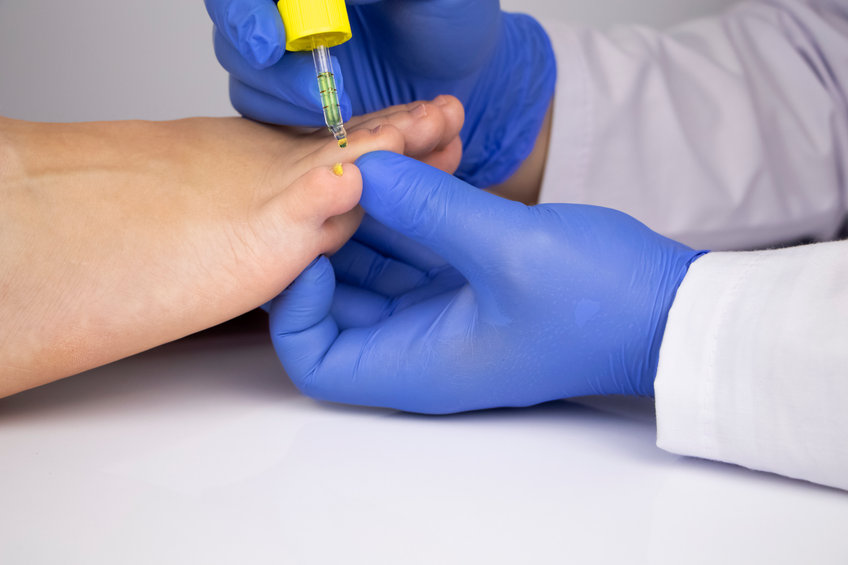Onychomycosis is the medical word for a chronic fungal infection of the toenails or fingernails. Toenail fungus most often occurs in adults, but also can occur in children.
Signs and symptoms of nail fungus
• Nail discoloration
• Extra skin cells growing between the nail and nail bed or thickening and lifting off the nail (called subungual hyperkeratosis)
• Splitting or destruction of the nail plate
Nail fungus can worsen and become painful, spread to other body sites, and in people with weakened immune systems, could become a skin infection. People can get toenail fungal infections from direct contact of the nail with mold or yeast that cause infection. These fungi can come from infected skin or the environment.
What puts someone at increased risk for nail fungus?
• If the nail is already injured or diseased
• Chronic diseases like diabetes, weakened immune systems, cancer, obesity, or blood flow disorders
• Certain environmental factors like poor nail grooming, sports and fitness activities, smoking, and wearing closed in shoes without much airflow
Topical Treatments (prescription only):
Oral antifungal therapy generally is preferred over topical therapy due to higher rates of completely curing the infection and cost effectiveness. However, some people may benefit from topical therapy if they have mild to moderate onychomycosis. For instance, if you are on other medications that may interact with oral treatment, want to avoid oral treatment, or have any contraindications to oral treatment, topical treatment may be useful.
Topical treatments made specifically for nail disease must be used for treatment because most other antifungal creams or ointments used for skin infections are generally not very effective, as they do not penetrate the nail plate.
• Jublia® (efinaconazole) is a liquid applied directly to the nails once a day for 48 weeks. Infrequently, ingrown toenails and local skin irritation may occur as a side effect.
• Kerydin® (tavaborole) is a liquid applied directly to the nails once a day for 48 weeks. Potential side effects include ingrown toenail and local skin irritation.
• PenlacTM (Ciclopirox) is a liquid applied to the nail, surrounding skin, and nail bed daily until the nail clears up or after 48 weeks of treatment. It may also cause local skin irritation and possibly temporary nail changes.
Alternative treatments:
If someone chooses not to use one of the treatment options outlined above, topical urea has been used alone or in combination with one of the first-line treatment options. Ask your doctor exactly how to use the urea cream for nails, as there are specific instructions.
Also read our blog about Oral Treatments for Nail Fungus
Save up to 80% on the cost of your prescriptions at your local pharmacy with EasyDrugCard.com. Download your free drug card and begin saving today.
References:
1) Goldstein, A.O., Bhatia, N. (2019). Onychomycosis: Epidemiology, clinical features, and diagnosis. In R.P. Dellavalle, M.L. Levy, & T. Rosen (Eds), UpToDate. Available from Onychomycosis: Epidemiology, clinical features, and diagnosis – UpToDate
2) Goldstein, A.O., Bhatia, N. (2019). Onychomycosis: Mangement. In R.P. Dellavalle, M.L. Levy, & T. Rosen (Eds), UpToDate. Available from Onychomycosis: Management – UpToDate.












